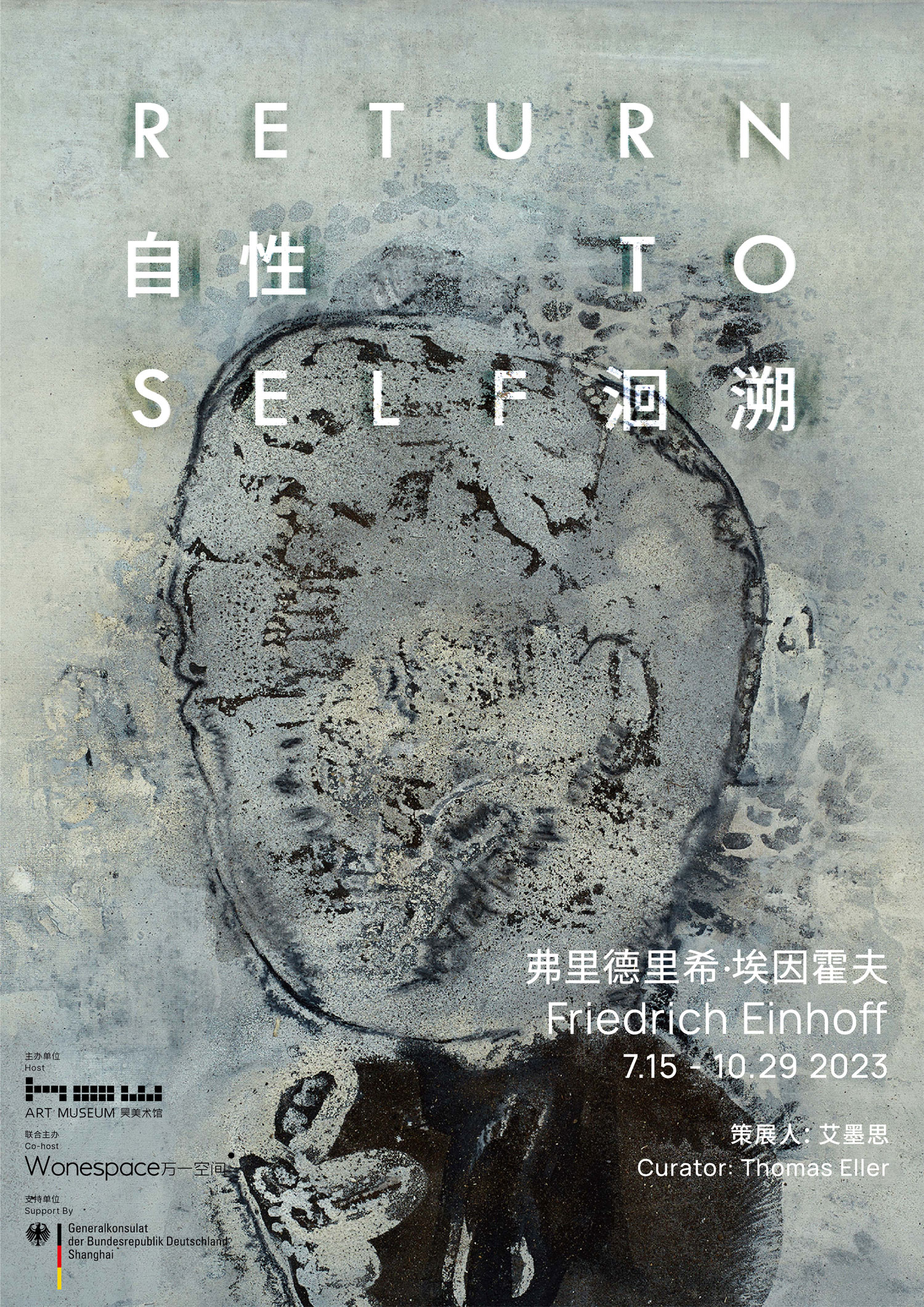The exhibition features a cross section of his oeuvre of five decades as well as comprehensive bodies of work from his different work series like “Personenregister, Miniaturen, Tiere, and Überzeichnungen (painted over photographs)”. The exhibition reveals the profound and sincere emotional depth of a painter deeply concerned about the human condition, a man capable of real compassion, love, and respect. With over 100 works of art, it is the most comprehensive exhibition of this artist in China yet.
As a painter, Friedrich Einhoff was not looking to create a masterpiece, instead be accomplished to give to the world many masterful pieces, large and small, that are both, painterly gems, and sometimes painful, sometimes humorous investigations into the human soul. The intensity of his painterly skills is exceptional and has become increasingly appreciated and admired in the past few years, especially amongst artists, but also more and more by collectors in China.
Despite the fact, that Einhoff never set foot in China and his work not “about” China, his work resonates deeply with Chinese audiences. This exhibition explores the artistic and intellectual background of Friedrich Einhoff and strives to unveil and present the qualities of Einhoff´s work that make him so much appreciated in China.
“Apparently there is a strong hidden emotional connection between China and Germany, that Friedrich Einhoff has managed to activate”, says Thomas Eller, the curator of the exhibition.
Friedrich Einhoff was a very prolific and productive artist who was able to sense and channel the energies of his times. Coming of age immediately after WW2, he grew up a sickly boy who would have to spend lonely times in medical facilities, because of his ailments. This experience made him grow to become an expert in human nature.
It is said that Friedrich Einhoff was very well read. He had a penchant for the absurd, the dark and the sarcastic. One of his favorite writers was his contemporary Thomas Bernhard from Austria. He read Franz Kafka, Peter Weiss, Samuel Beckett, Albert Camus, but also Jacques Lacan, the French psychoanalyst who, famously, tried to learn Chinese in order to deconstruct symbolic meaning in the structure of languages. Despite all his reading Einhoff rarely seems to have shown-off his knowledge. Reading for him must have been like eating, a nurturing necessity, incorporating the ideas into his own intellectual body. But he was apparently not discussing this with other artists. Instead, they had discussions about art. Francis Bacon, Peter Blake, and David Hockney were important to him amongst others. An essential influence was Hans Platschek a very energetic artist and art theorist, who helped guide Einhoff on his path from abstraction to his realize his own pictorial figurative style.
In 2009 he was even awarded the Hans-Platschek-Prize for Art and Scripture and in a sense, Friedrich Einhoff was one of the German figures to come closest to the Chinese notion of a Literati painter. Einhoff was a very intuitive person who was constantly experimenting in his studio. He was not interested in creating “the” masterpiece. He was more interested in the work process and to see what was happening during the process. In a way the paintings even seem to have used Einhoff´s hand to create themselves. This is how Einhoff himself described his process. Werner Hofmann used the term “in-between” to describe the focus of Friedrich Einhoff to express a notion of “becoming”. Not only did he work hard to improve his painterly skills every day, he was also exercising humbleness, restraint, compassion, and respect to improve himself. In the words of Hans-Georg Gadamer: “Educated is he who can overcome his self-love so that he hears what the other wants to say." In other words – to arrive at “oneself” one has to go through a deep understanding of the other un order to return to (one-)self.
Friedrich Einhoff over the course of his life-time and his artistic career became an expert in human nature and his paintings are landscape paintings (山水) of the human soul. In that sense the works by Einhoff are not “about” anything. They don´t show or explain or narrate. They are. They convey inner energies put into them by the painter. Einhoff was so prolific at that, that sometimes it even seems that the figures in Einhoff´s painting are about me, the viewer and the paintings actually show my emotions.
Why that is, why Einhoff became this exceptional figure who can communicate seemingly effortlessly across cultural borders, might never become completely resolved. What can be said about him though, is that he was able to re-integrate the pieces of his complicated life of pain and sorrows into one of achievement and humble strength. He was able to transform his immediate social life into a blissful environment of care, respect and even love. After all his strife he could successfully return to self for which his art was his conduit.

